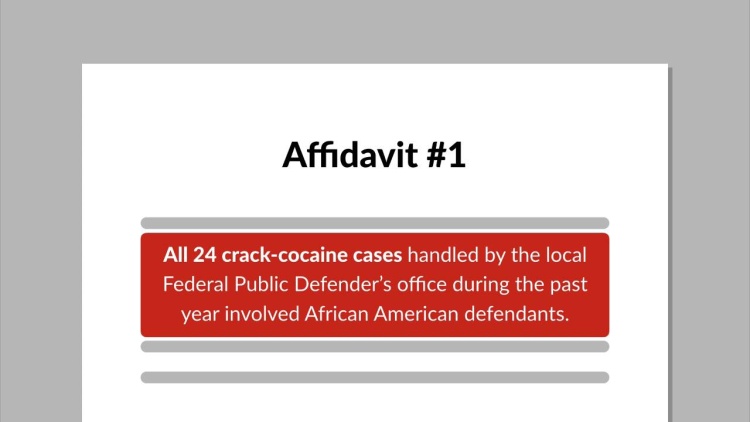United States v. Armstrong
United States Supreme Court
517 U.S. 456, 116 S. Ct. 1480, 134 L. Ed. 2D 687 (1996)
- Written by Sarah Venti, JD
Facts
Armstrong (defendant) and others were indicted in federal court on charges of conspiring to possess with intent to distribute crack cocaine and federal firearms offenses. In response to the indictment, Armstrong filed a motion for discovery or dismissal of the indictment on the ground that he was selected for federal prosecution because he was Black. In support of his motion, Armstrong provided a “study” listing 24 defendants prosecuted for drug offenses in 1991 who were all Black. The district-court judge then issued a discovery order requiring the government to submit documentation related to federal drug offenses, the races of defendants in those cases, and the government’s criteria for deciding whether to prosecute defendants for federal cocaine offenses. In response, the government submitted affidavits and other evidence to explain why it chose to prosecute Armstrong and the other defendants and why Armstrong’s “study” did not support the inference that the government was singling out Black defendants for federal cocaine prosecution. One of the attorneys for another defendant subsequently filed an affidavit from a drug-treatment-center employee who said that there were as many White drug users and dealers as there were Black ones. Additionally, the attorneys submitted an affidavit from a criminal-defense attorney claiming that many White defendants were prosecuted in state court for crack offenses as well as a newspaper article claiming that federal Black defendants charged with crack-cocaine offenses were being punished more severely than if they had been charged with powder-cocaine offenses. The district court denied the government’s motion for reconsideration of the discovery order. When the government refused to comply with the order, the case was dismissed. The United States Court of Appeals for the Ninth Circuit affirmed the dismissal, and the government appealed. The United States Supreme Court granted certiorari.
Rule of Law
Issue
Holding and Reasoning (Rehnquist, C.J.)
Dissent (Stevens, J.)
What to do next…
Here's why 899,000 law students have relied on our case briefs:
- Written by law professors and practitioners, not other law students. 47,000 briefs, keyed to 994 casebooks. Top-notch customer support.
- The right amount of information, includes the facts, issues, rule of law, holding and reasoning, and any concurrences and dissents.
- Access in your classes, works on your mobile and tablet. Massive library of related video lessons and high quality multiple-choice questions.
- Easy to use, uniform format for every case brief. Written in plain English, not in legalese. Our briefs summarize and simplify; they don’t just repeat the court’s language.






